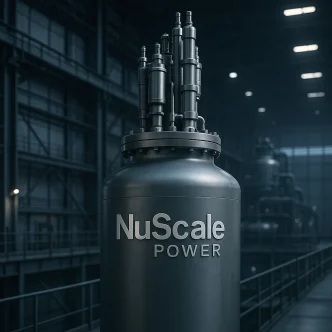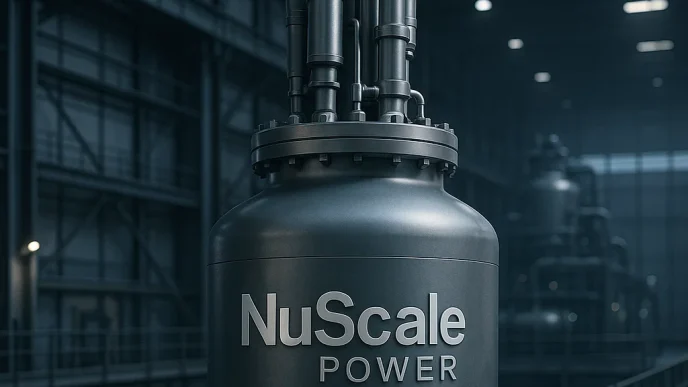UMAC, RCAT, and ONDS: what is behind the growing interest in small-cap stocks in 2025?
Amid increasing competition for the attention of retail and institutional investors, some second-tier companies are suddenly stepping into the spotlight. In recent weeks, the securities of Unusual Machines (NYSE:UMAC), Red Cat Holdings (Nasdaq:RCAT), and Ondas Holdings (Nasdaq:ONDS) have seen a surge in trading activity and have been the subject of intense interest from market participants. Let’s break down the developments behind this and how sustainable the current trends are.
Unusual Machines ($UMAC). Explosive growth of interest and speculative liquidity
Perhaps the most notable increase in investor attention has been seen in the case of $UMAC. Over the past few days, the company’s stock has seen a powerful price movement accompanied by over $300 million in turnover, placing it in the top 400 in terms of trading volume on the entire U.S. exchange. Some days have seen gains of more than +50%, with the number of open options rising sharply, especially at short strikes.
The company specializes in technologies for drone solutions and video platforms. However, such a sharp rise in quotes is more likely due to a number of corporate triggers, including:
- improved first-quarter operating results;
- appointment of new top managers;
- abnormally high interest in short-term options (call volume grew by 282%).
Interestingly, the increase in liquidity in the paper was accompanied by a decline in short interest from almost 20% to less than one day of coverage – this may signal the beginning of a realignment of market participants’ expectations. At the same time, the business remains structurally at risk: operating profitability has not been achieved, dependence on external financing remains, and the business model has not yet passed the maturity phase.
This may present an opportunity for active traders, but for a sustainability-oriented investor, it is important to realize that the moves in the stock were driven primarily by market dynamics, not fundamental changes.
Red Cat Holdings (RCAT). Drones, geopolitics and structural recalibration
Red Cat operates in the defense drone segment and recently announced a significant expansion of orders, including the supply of drones for government and military use. Its stock is up more than 400% since the start of 2025, although recent earnings reports have generated mixed reactions.
Financial drivers and reporting
At the end of the first quarter of 2025:
- The company reaffirmed revenue guidance to $120 million;
- raised $46.8 million in a direct placement;
- current liquidity ratio is above 6, indicating financial strength.
However, the market reacted painfully to the news of a class action lawsuit regarding disclosure of information during the offering period. The stock corrected sharply by -7.4% despite formally positive revenue forecasts.
Geopolitical factors and risks
Interestingly, Red Cat remains in the center of attention also due to foreign policy factors – intensification of military purchases, discussion of tactical drones deliveries to regions of high instability create prerequisites for new contracts. But regulatory and legal issues remain key constraints. For an investor focused on industry growth, $RCAT is an asset with a high potential multiple, but also with significant risks related to corporate transparency and dependence on defense budgets.
Ondas Holdings (ONDS). Fundamentals under pressure from market expectations
Ondas Holdings, unlike the aforementioned issuers, has exhibited more balanced behavior, underpinned by specific business results. The company operates at the intersection of wireless communications and technologies for autonomous platforms (drones, AI networks) and boasts a number of strategic agreements.
Strategic partnerships and liquidity
Key drivers of the growing focus on ONDS:
- A projected six-fold increase in revenue in Q2 2025 (to ~$6M);
- Strategic partnerships (including Klear and Mistral);
- zero debt load and over $67M of cash on hand;
- ordered portfolio (backlog) – $22.8M.
Nevertheless, investors were wary of potential capital dilution following the funding announcement, and the stock is down about 7%. However, given the quality of corporate governance, transparency and cash reserves, ONDS remains among the promising securities on a 6-18 month horizon
Comparative Table: Trading Activity, Fundamentals, and Risks
| Ticker | Trading Dynamics | Information Drivers | Financial Foundation | Key Risks |
|---|---|---|---|---|
| UMAC | +++ (Over $300M in volume, options activity) | Executive appointments, earnings reports, option market interest | Weak | Speculative pressure, potential overvaluation |
| RCAT | ++ (High volatility, defense contracts) | Revenue growth, legal actions | Moderate | Regulatory exposure, post-Q1 drawdown |
| ONDS | + (Stable investor interest) | Revenue growth, strategic partnerships | Strong | Potential equity dilution |
Scenarios for investors
For short-term traders
$UMAC and $RCAT can be interesting due to volatility, availability of option strategies and fast market reaction to news. But such instruments require careful risk control.


For institutional and long-term investors
For active market participants, such securities represent not only an opportunity to lock in profits on short-term volatility, but also a valuable window into the changing structure of investor interests. The shift towards drone technology, autonomous solutions, and flexible corporate strategies reflects the transformation of demand for small-cap stocks in 2025. UMAC, RCAT, and ONDS embody three different models of market behavior: from a sharp surge of interest to attempts to create fundamental stability.
It is important for investors not only to respond to external signals, but also to be able to recognize which companies have the potential to become long-term growth stories. In a volatile market environment, the emphasis on transparency, partnership, and financial discipline becomes critical. A balanced approach to stock selection in this segment can be an important part of the strategy, especially if the investor is willing to combine elements of growth and risk.
It is important to consider not only financial reporting, but also the quality of corporate governance, the innovation agenda, and the response to external challenges.
Thus, interest in UMAC, RCAT, and ONDS fits logically into the broader context of changing investment priorities. These issuers deserve attention but require careful analysis at every stage of the decision-making process. In conclusion, for active market participants, such securities are not just a way to profit from short-term fluctuations but also an indicator of sentiment in the small-cap sector. The growing interest in drone technology, the development of autonomous systems, and non-standard corporate structures demonstrates where the focus of modern investors is shifting.
Each of the three companies illustrates its own path: from bright speculation to attempts to build a sustainable business. It is important for investors to distinguish between temporary liquidity surges and structural changes confirmed by financial results.
The future of these issuers will depend on their ability to scale their product, strengthen partnerships, and adapt to regulatory and market changes. Careful monitoring of news, reporting, and corporate actions remains key to making informed investment decisions.
Those looking for growth potential in an unstable macro environment should take a closer look at these stocks — not only for quick profits, but also to understand new market trends. Even against the backdrop of high capital concentration in “first-tier” stocks, participants are actively seeking opportunities among small issuers. $UMAC, $RCAT, and $ONDS are three different scenarios, each of which is interesting in its own way:
- $UMAC is an example of a sharp speculative surge in liquidity;
- $RCAT is a strategic player in the drone market with legal complications;
- $ONDS is a structured issuer with a fundamental focus on revenue growth and stable partnerships.
The future performance of these securities will depend on a combination of internal drivers and external factors, including macroeconomic conditions, regulatory decisions, and market demand for autonomous technology.
On the Bintab.com website, you can also find a separate section dedicated to biotechnology companies, with a detailed analysis of clinical trial phases, key industry players, and FDA approval dynamics. In addition, professional analytical articles and current investment ideas are published regularly to help you build a balanced and promising portfolio.














